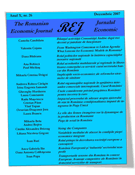Abstract:
When looking at the Global economy and the quantification of the operative risk in the cost of capital, a necessary ingredient for a meaningful analysis is an assessment of the country`s integration into world capital markets. The international financial markets are progressively becoming one huge, integrated, global capital market, that is contributing to higher stock prices in developed as well as developing economies. If for example a market is segmented from the rest of the world, its exposure with a common world factor may have little or no ability to explain its expected return. Large companies visible enough to attract global investors, have a lower cost of capital and a greater equity value for two main reasons: first, because the risks of equity are shared among more investors with different portfolio exposures and hence a different “appetite” for bearing certain risks, equity market risk premiums should fall for all companies in countries with access to global markets. Second, when firms in countries with less-developed capital markets raise capital in the public markets of countries with highly developed markets, they get more than lower-cost capital; they also import at least aspects of the corporate governance systems that prevail in those markets. Besides reducing market risk premiums and improving corporate governance, globalization also affects the systematic risk, of individual companies. In global markets, the beta of a firm's equity depends on how the stock contributes to the volatility not of the home market portfolio, but of the world market portfolio. For companies with access to global capital markets whose profitability is tied more closely to the local than to the global economy, use of the traditional CAPM will overstate the cost of capital because risks that are not diversifiable within a national economy can be diversified by holding a global portfolio.
